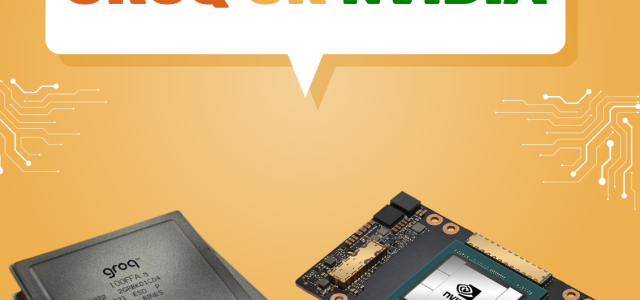If you care about real-time AI — think live voice assistants, instant translation, or chatbots that must respond without awkward pauses — you’ve probably heard the buzz about Groq’s LPU. At the same time, NVIDIA is still the giant everyone trusts for both training and inference. Which one should you care about? Short answer: LPUs are exciting and useful for very specific problems, but they won’t replace GPUs across the board. Here’s why, explained without the mumbo-jumbo.
What’s an LPU anyway?
LPU stands for Language Processing Unit. It’s a chip designed specifically for running transformer models (the kind behind modern language models) and for doing that fast and consistently. Unlike GPUs, which are generalists built to do a lot of different math (including training huge models), LPUs are single-minded: run tokens quickly, keep latency predictable, and use less energy for that one job.
Think of it like comparing a sports car tuned for city traffic to a heavy-duty truck. The car wins if you need to zip through stop-and-go traffic (low latency). The truck wins if you need to haul a ton of stuff (training or huge batched jobs).
Where LPUs shine
LPUs are great when your product’s success hinges on how fast and reliably the model responds:
-
First-token latency matters. If users notice a lag as soon as they start a voice command or live chat, LPU-style hardware can feel much snappier.
-
Deterministic responses. Low jitter (less variability in response time) means a smoother, more predictable user experience — important for real-time interactive systems.
-
Power and density. LPUs are designed to be efficient; if your data center real estate or power budget is tight, they can lower cost per inference in the right workload.
If your app is all about streaming tokens and instant interaction, LPUs are worth testing.
Where NVIDIA still wins
NVIDIA isn’t going anywhere. Their GPUs have huge strengths:
-
Versatility. GPUs do both training and inference well. If you want one stack that handles development and production, GPUs make life easier.
-
Ecosystem. CUDA, TensorRT, Triton — NVIDIA’s software tools are mature, widely supported, and integrate with cloud providers and third-party tools. That matters when you need reliability and speed to production.
-
Batch throughput and mixed workloads. If your system benefits from batching requests (e.g., background generation, analytics) or mixes vision and language tasks, GPUs tend to be more cost-effective.
In short: if you need one platform for everything, or your workload is varied, NVIDIA’s ecosystem keeps you moving faster as a team.
About the benchmarks — read the fine print
You’ll see flashy numbers from both sides. Groq shows impressive low-latency and tokens/sec in demos. NVIDIA shows great throughput and optimizations in their papers and guides.
But benchmarks can be misleading if you don’t compare apples-to-apples. Check these things before you believe any claim:
-
Model variant and size (are they using the same exact model?)
-
Precision (FP16, FP8, INT8 — different precisions change performance a lot)
-
Workload pattern (streaming single requests versus batched jobs)
-
Which latency metric? First-token latency tells a different story than total response time or sustained throughput.
Always run a pilot with your own model and traffic patterns.
Practical advice for product and infra teams
Here’s a simple path you can follow:
-
Define what matters. Decide whether first-token latency, p95/p99 tail latency, throughput, or cost per million tokens is your primary metric.
-
Run a pilot. Convert the same model to both stacks and test under realistic traffic that includes bursts and streaming. Measure not only performance but developer effort and compatibility with any custom ops.
-
Consider hybrid fleets. Many teams train on GPUs and serve latency-critical traffic on inference-optimized hardware (LPUs or inference GPUs). Routing logic can send quick interactions to the low-latency fleet and heavy jobs to GPUs.
-
Account for vendor risk and portability. LPUs may require different toolchains. If you want to be able to move between vendors easily, plan for standard model formats and conservative optimizations.
Caveats and risks
-
Tooling maturity: LPUs have smaller ecosystems today. That means more engineering work to port models and maintain the stack.
-
Vendor lock-in: Optimizing heavily for one architecture can make it harder to switch later.
-
Supply and support: NVIDIA’s scale and cloud presence are hard to match right now — that matters for large deployments and global support.
My verdict
LPUs are part of the future. They are not a silver bullet that will replace GPUs everywhere, but they are a very useful tool for any team that needs predictable, ultra-low latency for token generation. Over the next 12–24 months expect to see LPUs adopted in latency-sensitive niches and in hybrid setups alongside GPUs. Whether they become mainstream will depend on tooling maturity, real-world total cost advantages, and how well companies like Groq scale support and cloud offerings.
